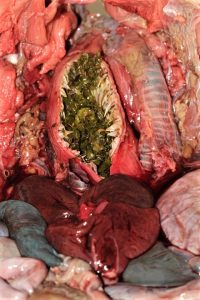Analysis of the Green Turtle Esophagus Chelonia Mydas (Linnaeus, 1758), Testudines, Cheloniidae
SUMMARY: The esophagus is a muscular tube whose function is to transport food from the mouth to the stomach and basically
contain the same layers as the rest of the digestive tract. The morphological knowledge of structures involved in basic physiological
processes in organisms is extremely important in the acquisition of ecological and evolutionary knowledge about species. This study
produces morphological information proving the structures found in the green turtle’s esophagus. The animals were dissected according
to the methodology used by Wyneken, allowing analysis of external and internal morphological characteristics of the esophagus. The
samples were processed for microscopic analysis by light and scanning electron microscopy. It was observed that the esophagus presents
thin and conical dermal papillae facing the stomach throughout the mucosa to the gastroesophageal portion, decreasing its size at the end
of its extension, covered by a thick keratin layer on keratinized pavement epithelial tissue. It is concluded that the esophagus of Chelonia
mydas is covered by a layer of conical keratinized dermal papillae important to exert the mechanical and protective function of the
mucosa of this organ, considering that the feeding of these animals is extremely abrasive, besides serving as protection so that the food
does not return.


